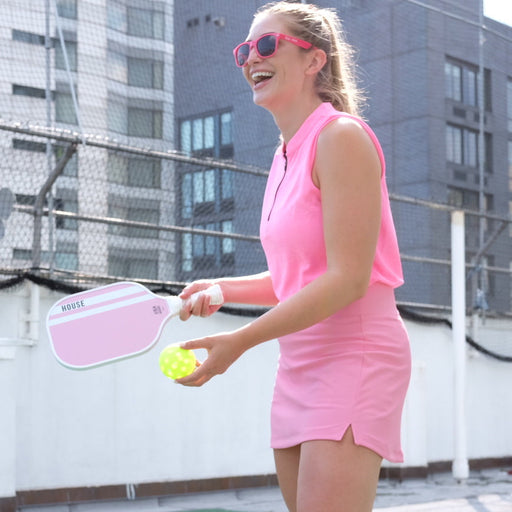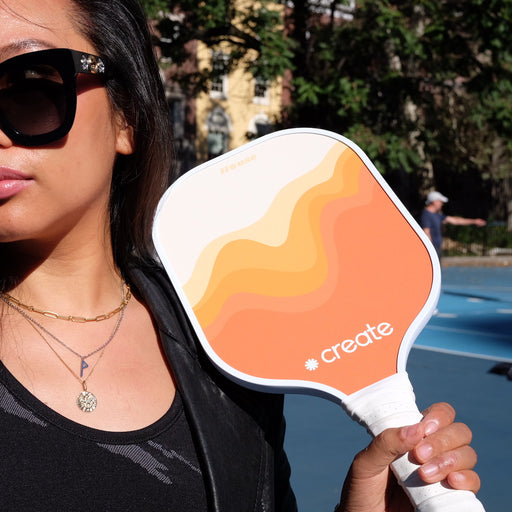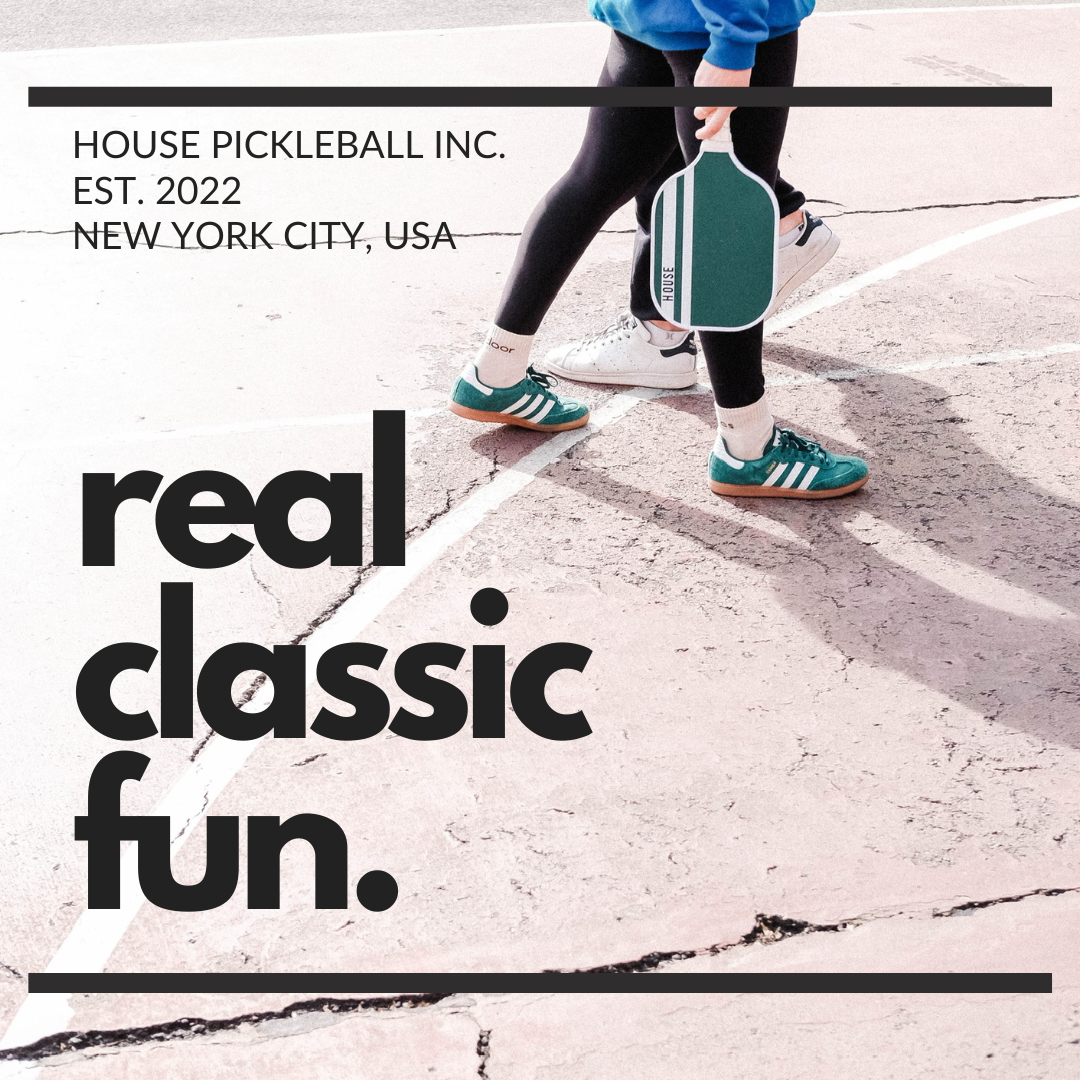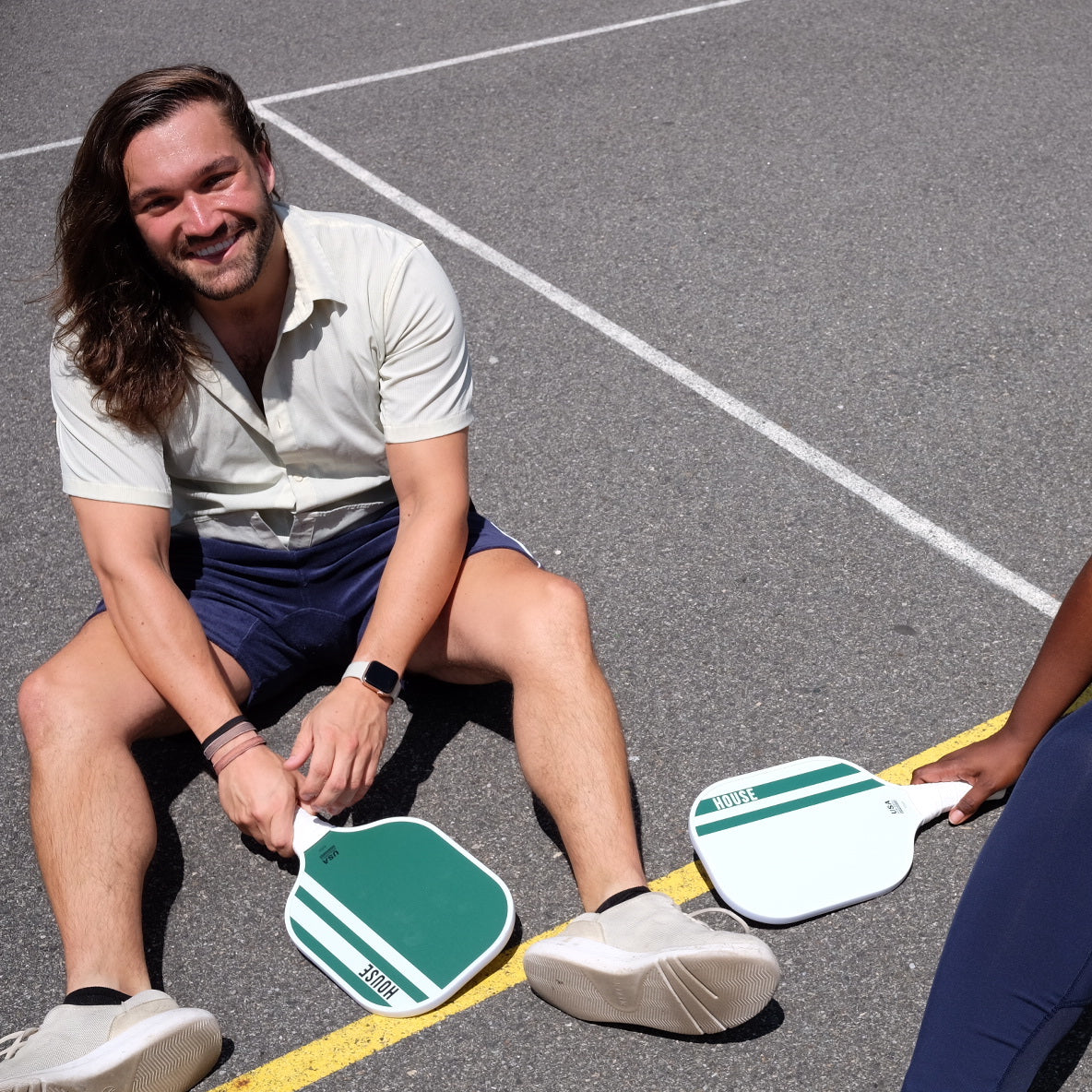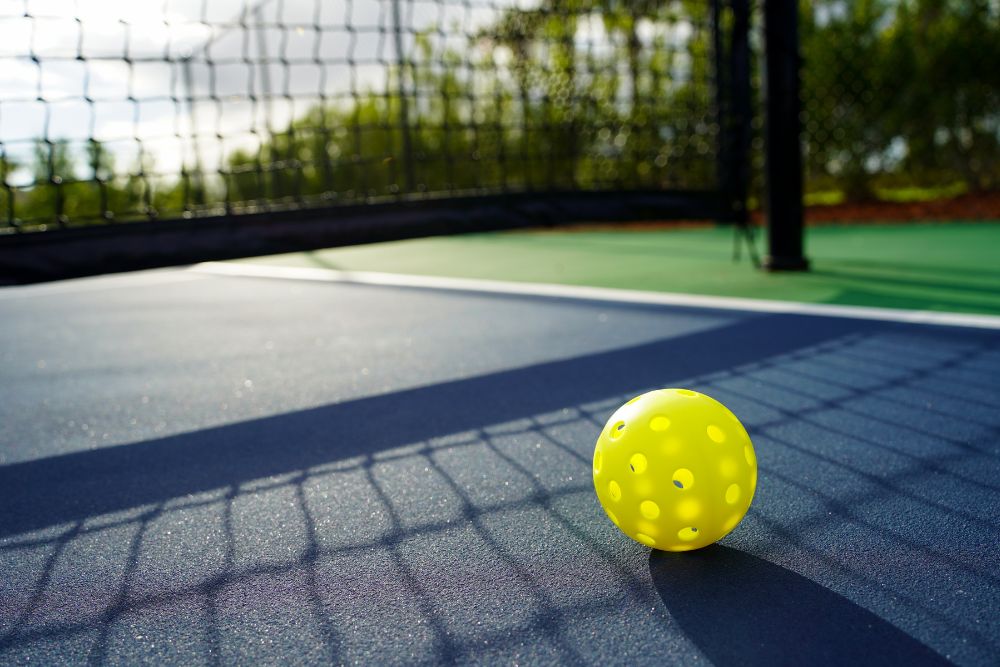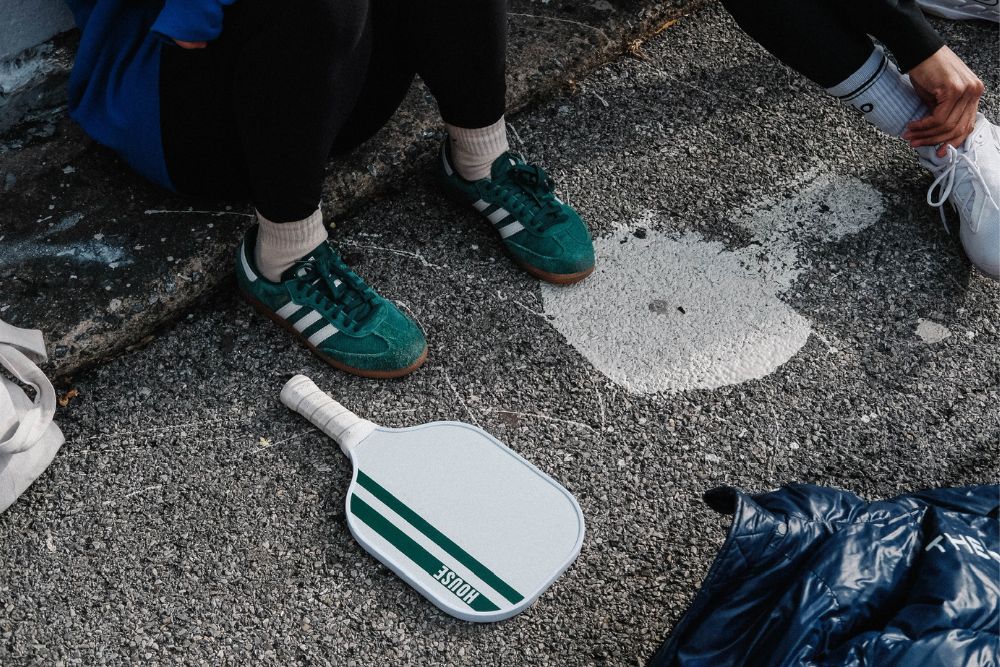
All You Need To Know About The Types Of Pickleball Paddles
Pickleball is sweeping the nation and everybody wants to get on the hype train. Since pickleball is quite different from its big brothers table tennis and tennis it is hard to imagine to common folk what constitutes a great paddle.
There are many types of pickleball paddles that come in many different sizes, styles, and surface materials. The latest is the most important factor and the one I’ll focus on the most.
Why is the material the paddles are made from important?
The materials are the main culprits and the most responsible for the type of game performance pickleball players will experience.
The effect of the different shot types will mainly depend on the choice of what materials the paddle will be made from.
The other key thing is the actual quality of manufacturing. Even the use of quality high-tech materials will not guarantee that it will bring out the maximum of your power and precision in the swing if materials are not properly combined into a powerful paddle.
Types Of Pickleball Paddles Depending On Surface Material

There are many types of surface materials that the industry uses to make a perfect paddle, but the differences between pedals consist in the selection and combination of materials used in the factory.
The most common types of material used for manufacturing quality pickleball paddles are fiberglass/composite, graphite/carbon fiber, and wood.
Fiberglass/Composite Paddles
While fiberglass may not be seen as the strongest of the three materials, fiberglass or composite paddles (as some people call it) benefit strong players with powerful swings more than graphite/carbon fiber or wood would.
These types of paddles are usually cheaper than paddles made from other, more modern materials but they tend to break sooner. The reason for this is that fiberglass is used for its elasticity and flexibility rather than strength/toughness.
This enables the player to get the extra kinetic force on the touch between the ball and the paddle with the material bending on a microscopic level. The bending of the material then creates additional energy which the player cannot create just on its own.
Graphite/Carbon Fiber Paddles
Carbon fiber paddles bring out the best in all categories of the stats in the paddles. The inherent strength of carbon fibers ensures durability that cannot be matched with any other material.
Carbon/graphite fiber is made in the process of layering strips of carbon (in the form of graphite) in very thin and hugely tight layers which in the end give a very strong composition that reduces the bending (and therefore the possible chance of breaking) of the object which he envelopes.
What does this mean for the pickleball player and its paddle?
This means that players can rely firstly on generating spin and controlling the ball in pickleball games. And secondly, players can rely on these types of paddles for consistent spin performance and overall durability with age.
From a scientific point of view in the matter, the carbon fiber's stiffness provides force transfer from the paddle to the ball flawlessly resulting in powerful serves and control of the hit that no other paddle can even closely resemble.
If we look from the players' perspective, carbon fiber paddles also benefit health. That’s because the paddle suffocates most of the shock from hits, reducing strain on players' arms and wrists ensuring a lesser percentage of injuries.
All in all, for the best combination of all aspects of pickleball paddles, carbon fiber paddles seem to be the ultimate choice.
Wood Paddles
If you are new to pickleball and all this talk about high-tech materials is giving you confusion and a headache, do not worry. Wood paddles are all you need for your start in the journey of pickleball.
Wood has natural characteristics that all these artificial composites are based on, just on a lesser level. These by far cheapest paddles will bring you a basic comfort and feel that is natural to the human hand when using a tool or paddle in this case.
The natural bending and elasticity of wood fibers give just enough push for your shots to give off more strength.
Even though wood is a little bit on the heavier side, the muscular tissue of young players will be thankful for the extra effort that muscle growth will have to make, giving the healthy exercise necessary for developing muscles and blood flow in the arms.
Oh and did I say this is the most ecological way you can go when it comes to paddles? For many people, this is an important factor when choosing the best pickleball paddle!
Types Of Pickleball Paddles Depending On The Core Material

Surface materials are not the only factor that shows the quality of the pickleball paddle. What is beneath the surface is one of the key factors in differentiating the quality from bad paddles.
The main materials and types of cores used in pickleball paddles are aluminum, Nomex, polypropylene, and carbon fiber. I will explain the differences in these materials below.
Aluminum Core
Aluminum cores have been made somewhat redundant by new inventions in the field of materials. Since aluminum is so light, it was a great material for cutting and reducing weight.
However, because of the softness of the element they lacked power, muffling the elasticity of a hit and denting the paddle in the process making it useless after some time of regular use.
Also, players found them quite loud, with deafening noise breaking their concentration and making the game feel unpleasant overall.
Even though it was an industry standard some time ago, the bad experience using these paddles made new innovations that were built on the downsides of aluminum cores.
These innovations became new materials that came into the industry and became industry standards, replacing every bad thing about the aluminum core.
Polymer
Almost all pickleball paddles made today use polypropylene (also called Polymer or PP).
This material and the shape it is used for are today's industry standard without question for sure.
The polymer has proved to be the superior material to use in so many sports requisites, and the cores for pickleball paddles are not an exception.
Most of the other cores outside of polymer are used in lower budget paddles which give a considerably lower performance. Of course, exceptions have been created with some experimental high-end paddles but in the wider market polymer paddles dominate the courts.
But it is not only the polymer that conquered markets but the way it is used too!
Many times, the polymer is laid out in the so-called honeycomb structure to max out all the material possibilities. This shape has been a key factor for polymers' coercion of the market.
Nomex
Before Polymers started dominating the market, Nomex was probably the most popular material. For years, it used to be the most widespread material of the core used for pickleball.
While this core material is not as popular anymore, it is still used in the industry because of its performance.
Nomex core paddles absolutely dominate the courts with their power. The combination of material characteristics made Nomex core paddles one of the most powerful with a monstrous return of the force on the hit.
But it is not a perfect material because the noise that Nomex created caused serious noise pollution in the area where pickleball was played because it did not give off enough of the feel for the hit.
Carbon Fiber Core
This type of core is expected to become the next big thing in the world of pickleball. While there are paddles that use carbon fibers for the surfaces of the paddles there have been experiments to try to make pickleball paddles entirely out of carbon fiber.
What this would do to the physical aspects of the paddle is that the force on the paddle would travel throughout its surface and core uninterruptedly.
This principle would be using all the benefits of elasticity and strength of carbon fiber surface and it would transfer those benefits to the core too, making a paddle with incomparable lightness, feel, and power.
I’m excitedly waiting and biting my fingers for this concept to live and become an industry standard because that would not only change the gear but the whole sport in general!
Types Of Pickleball Paddles Depending On The Shape
The material of the paddle and its core is not the only feature that defines different types of paddles. The shape of the pickleball paddle comes into play, too.
Because different shapes of the paddles give a different feel to the game, they tend to make it easier or harder, depending on your skill level, to hit the sweet spots for that perfect ace or return that are difficult to catch.
Standard Pickleball Paddle
As the name says, the standard pickleball paddle is the most widespread shape of the paddle, used in most settings. It is an essential tool for beginners as it helps them learn the basics of the game and the limitations of the equipment.
These paddles range from 15 to 15 ¾ inches long, and around 8 inches wide. You will most commonly see grip lengths between 4 ½ inches to 5 ¼” on standard paddles.
Blade Pickleball Paddles
Blades are the experts' paddle shape. These slick paddles are very elongated and thin and are most popular with the players that compete in a singles type of match.
Blades are around 17 inches long and have the distinct feature of a sweet spot being closer to the edge of the paddle’s head.
This feature seems to be useless to new players who are just learning the basics of pickleball so I am advising that new players start with standard paddles and make their way up to blade paddles by upgrading their skills slowly.
Tennis players transitioning to pickleball consider Blades to be their paddle of choice since they resemble tennis racquets more than regular ones.
Teardrop Pickleball Paddles
The most distinct feature that teardrop pickleball paddles feature is a rounded shape. Because of this rounded shape, teardrop paddles have more balance when it comes to the weight ratio in the paddle.
The teardrop shape has a wider sweet spot for the perfect hit that makes it easier for players at any level to get that monstrous and powerful ace.
Widebody Pickleball Paddles
Widebody pickleball paddles are the most forgiving shape for a pickleball paddle. A wide-body paddle is 8 inches wide. This paddle is recommended for pickleball players that are pure hobbyists in this sport, with no regular training regime.
Also, this paddle is perfect for the older population that plays pickleball more for their physical therapy rather than competitiveness because the adrenaline and thrill is not in the key position, but a wonderful outdoor activity in the afternoon.
All this is because a widebody paddle has the most generous sweet spot of all types of pickleball paddles and extra width of the paddle and rim, making it easier to hit the ball perfectly and not risk wrist or arm injuries from too sudden movements of the game.
Final Words
So now you have seen and learned enough about the technology that goes into designing and making a perfect pickleball paddle.
The materials have progressed hand in hand with the sport itself and since the inception days, the change of the paddle meant a change of the sport.
The choice of the type of pickleball paddle you will buy and use depends on what are your priorities when it comes to pickleball. If you are more of a hobby player or a youth in growth the wood paddles will be more for your specific goal and benefit.
But if you are an experienced pickleball player who needs to get the most out of yourself, artificial materials are the way to go because they are made specifically for high-performance playing and will not tear down so easily.
For all of you who have read this article, I am sure that now you have the necessary knowledge and confidence to pick the perfect paddle but remember what they say - It is not the paddle that wins the game, or the player swinging it… It’s the combination of a Polymer honeycomb core with a Carbon Fiber surface!






